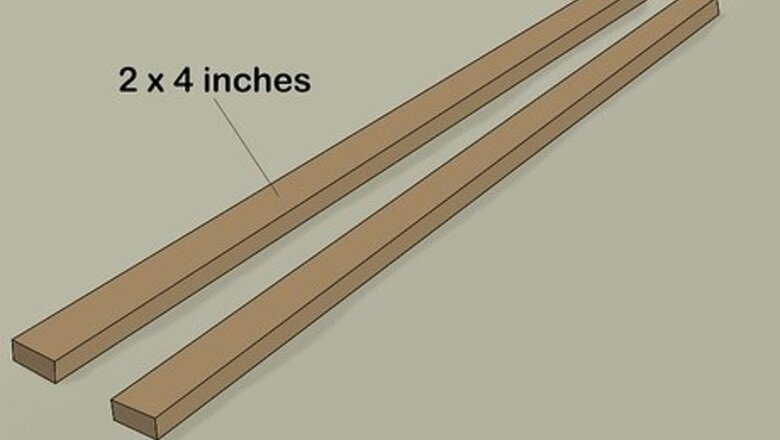
views
Cutting the Wood for the Job
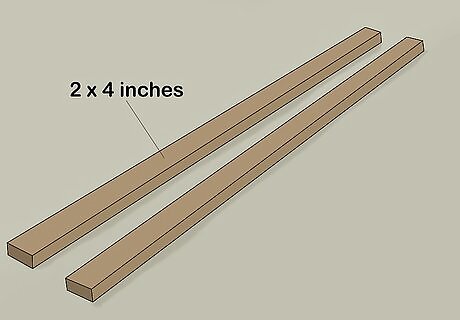
Use 2 x 4 dimensional lumber for the side rails. A pair of 8 feet (2.4 m) long pieces of good-quality 2 x 4 dimensional lumber will work well for this job. Pick through the pile at the lumber yard to avoid pieces that are warped, bowed, or cracked. Check that lumber is straight and “true” by holding one end up to your eyes and looking down the length of the wood.
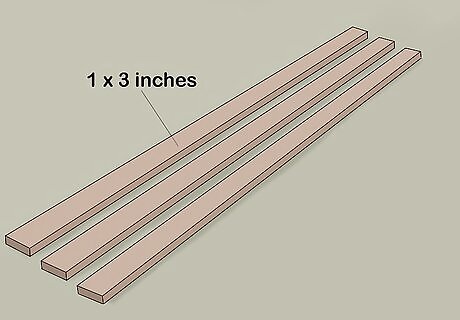
Grab 1 x 3 dimensional lumber for the stair treads (ladder rungs). The amount you’ll need depends on the width of your ladder-stairs and the number of treads required. But, in most cases, 2-3 pieces of 1 x 3 lumber that are 8 feet (2.4 m) long should suffice. You can use 2 x 4 lumber instead if you prefer to have “beefier” treads. When in doubt, buy an extra piece or two of lumber. It’s better to have leftover wood at the end of the job than to run out in the middle or it!
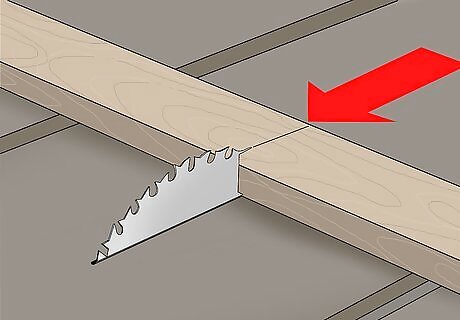
Use a hand saw or power saw to cut the wood. A good table saw or circular saw will make quick work of 2 x 4 and 1 x 3 lumber, but make sure you follow all safety precautions and know how to use the saw properly. A jigsaw will also work for this application, but again make safety your priority. If you have a steady hand and a sharp blade, a hand saw is fine for this job as well. Always wear eye protection when handling saws. Wear ear protection when using power saws. Make sure to keep your hands clear of the blade, and remove or tie back any loose clothing, jewelry, or hair. If you are wary of your cutting skills, you may be able to have your lumber cut to fit at the home improvement store.
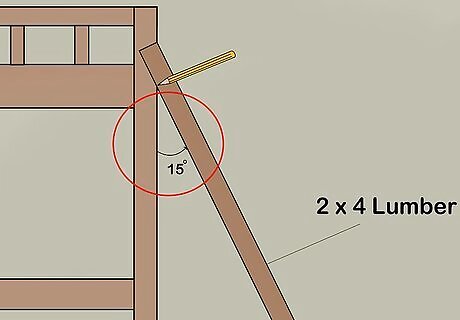
Create a 15 degree floor angle for a more upright ladder-staircase. Mark the angle on the wide side at one end of each piece of 2 x 4 lumber. Make the cut carefully with your chosen saw.
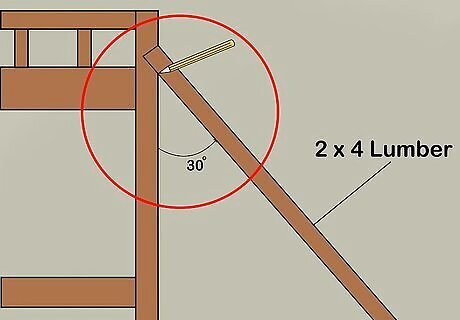
Use a 30 degree angle for a more stair-like structure. Use the same process for marking and cutting the 2 x 4 pieces, just with a greater angle. Remember that a 30 degree stair-ladder will protrude further out into the room.
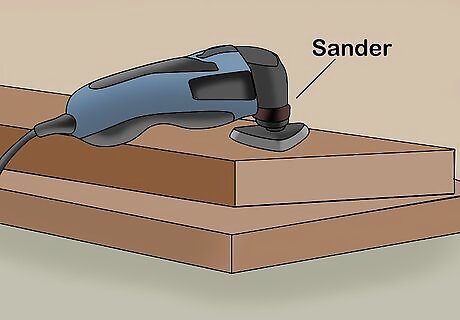
Smooth these and all subsequent saw cuts with sandpaper. Use a medium-grit (80-120 grit) sandpaper on all cuts you make during this project. Smoothing out any jagged edges will reduce your risk of cutting yourself, and will improve the fit and appearance of the ladder-staircase. Wipe away any dust with a damp rag or a tack cloth. It’s wise to wear eye protection and a dust mask while sanding.

Measure the width for your stair treads. Assuming that you’re working with a basic wooden bunk set, the ladder-stairs will usually attach to the inner sides of 2 vertical posts that either form a corner of the bed or support the upper bunk’s protective rail. Measure the distance between these posts, then subtract 3 inches (7.6 cm) to account for the side rails. An ideal adjusted width is between 16 and 18 inches (41 and 46 cm). You subtract 3 inches instead of 4 because 2 x 4 lumber is actually only 1.5 inches (3.8 cm) thick by 3.5 inches (8.9 cm) wide.

Cut the stair treads to length from the 1 x 3 lumber. Use the adjusted measurement between the bed’s support posts for the width of your treads. Then mark and cut 8 treads (7 to use and 1 spare) to this length with your saw. A typical bunk bed (e.g., 56 inches (140 cm) high to the top bunk’s deck) will need 7 treads — 1 on the floor and 6 spaced equally up the side rails. There should be about 10 to 12 inches (25 to 30 cm) of vertical rise between treads, so cut a few more or a few less than 8 if your bunk set is unusually tall or short.
Attaching the Side Rails to the Bed
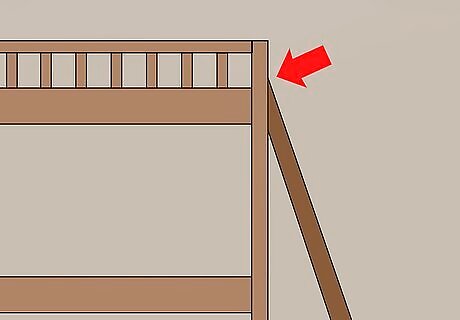
Position each side rail where it will attach to the bunk set. One at a time, angle a side rail toward the upper bunk so that its bottom angled cut is flat on the floor. Then place it in position up against one of the two vertical support posts on the bed. This part of the job will be easier with a second pair of hands, but you can manage it on your own if necessary.
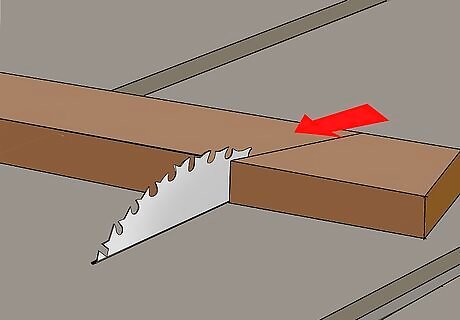
Mark the tops of the side rails so they’re flush with the bed. Once you’ve placed it in position against its intended vertical support post, trace the edge of the vertical support post onto the side rail so that you can cut it flush with the post. Repeat this process with the other side rail against the other support post.

Cut the tops of the side rails carefully with your saw. Before cutting the side rails at these upper markings, place them side-by-side to make sure they will be equal in length after cutting. Position and mark them again if they need fine-tuning, perhaps with the assistance of a helper this time.

Drill pilot holes into the side rails. Place one of the cut side rails back into position, with its bottom cut flat on the floor and its top cut flush with the correct vertical support post. Pre-drill 3 holes into the side rail where it meets the support post, using a drill with a bit that’s slightly thinner than the 3 in (7.6 cm) wood screws that will attach the rails to the bed. Repeat with the other side rail against the other support post. Use a special counter-sink drill bit (here and when drilling for the stair treads) if you want to completely hide the screw heads with wood filler later.

Attach both rails to their support posts with screws. Check again to make sure the rails are in their proper positions. Then, drive 3 in (7.6 cm) wood screws through the pre-drilled holes and into the support posts. If you didn’t use a counter-sink bit to pre-drill the holes, drive the screws in until the heads are at least flush with the wood surface. Or, drive them until they depress slightly below the wood surface, so you can cover the heads with wood filler later.
Securing the Stair Treads in Place
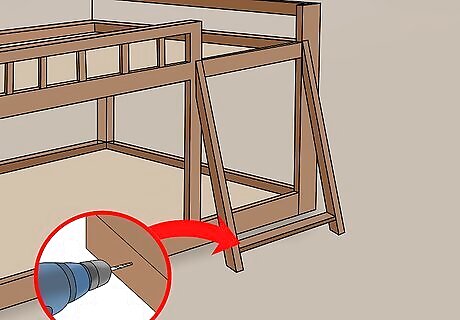
Position the bottom tread at the base of the side rails. Lay one of the treads you cut on the floor between the side rails. Then, mark its height on the side rails to help center your pilot holes. Move the tread out of the way after making the markings. The bottom rail rests on the ground in order to provide structural support.

Drill pilot holes and attach the bottom rail. Create 2 pilot holes per side through the rails with a drill bit that is slightly thinner than the 2.5 in (6.4 cm) screws you’ll use here. Put the tread back into position on the floor and drive the 4 screws through the pilot holes and into the tread. Use a counter-sink drill bit for the pilot holes if you want to completely conceal the screw heads later.

Mark the spacing for the remaining treads on the side rails. Along each side rail, measure the distance from the top of the bottom tread to the top of the upper bunk’s bed deck. Divide this measurement by 6 (for the remaining treads) and use this result to mark the location for each tread along both rails. For instance, if the measured distance is 66 inches (170 cm), the centered markings for each tread will be 11 inches (28 cm) apart. If you have a taller than normal bed, you may need more than 6 additional treads.
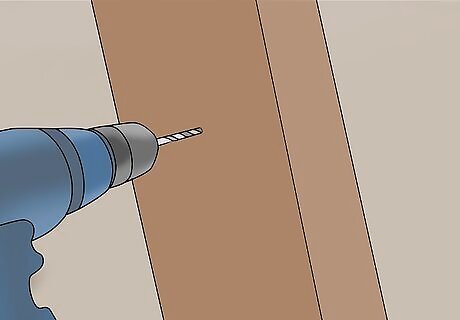
Mark the leveled position for each tread on the side rails. Working from the top-down or bottom-up, hold a cut tread centered between a set of the spacing positions you just marked. Use a spirit level (bar level) to make sure the tread is level both width- and depth-wise. Mark its top and bottom positioning against the inside of both side rails.
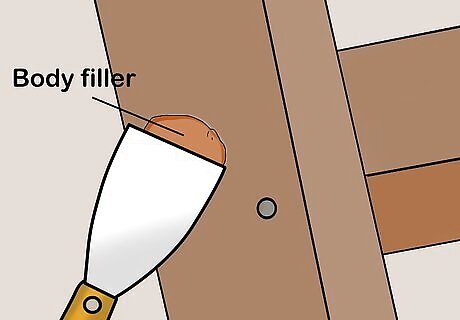
Drill pilot holes and screw the remaining treads in place. Using your markings for guidance, drill pilot holes — 2 per side per tread — through the side rails. Then, using a level as your work to confirm the positioning, secure each tread to the rails with 2.5 in (6.4 cm) wood screws. Recruit a friend to make this easier! While you can debate whether this is a ladder or a staircase, its angled rails and flat treads may be easier for kids to navigate than a vertical bed ladder.
Sanding and Finishing the Ladder-Stairs
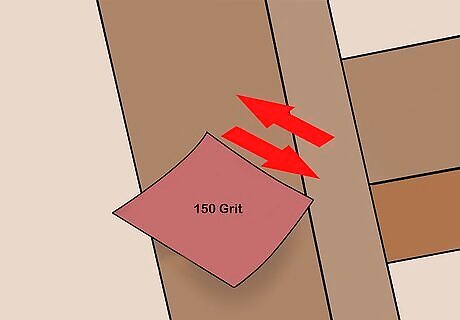
Apply wood filler to cover the depressed screw heads (optional). Wood fillers are thick pastes that usually come in round tubs. Use a small putty knife to apply the filler into the depressions created by your screw heads, as well as any knots or imperfections in the wood. Scrape away the excess filler, as this will make sanding easier later. Follow the product’s instructions for application and drying times. You can leave the screw heads exposed if you like, especially if you may want to remove the ladder-stairs later.
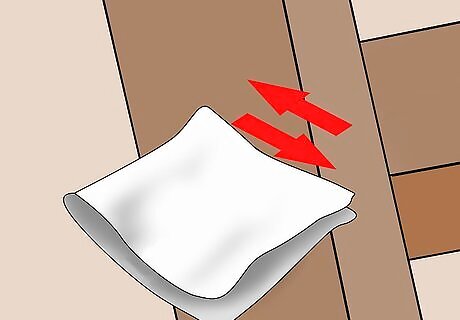
Lightly sand the entire ladder-stairs structure. Use a piece of fine-grit (150-180 grit) sandpaper or an equivalent sanding block. Rub the entire wood surface with light and even pressure. Keep sanding until the wood feels smooth to the touch. If you’ve applied wood filler, wait until it’s completely dry before sanding it. You may need to sand a bit more aggressively to smooth out excess filler. For your safety, wear a dust mask and eye protection when sanding.
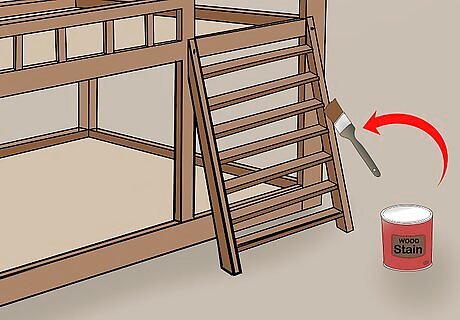
Wipe away sanding dust with a damp rag or tack cloth. You should get rid of the sanding dust under all circumstances, but it’s especially important if you plan to stain or paint the wood. Simply wipe down the surface until you can run your fingers on it without accumulating dust.
Stain or paint the ladder-stairs to match the bunk set. If you’re painting the wood, apply a primer first and then 1-2 coats of your chosen paint. If you’re staining the wood, apply a small amount in an inconspicuous area first to check the color. Then use a brush or rag to apply the stain, and wipe away the excess with a cloth. If you want the structure to retain a natural look, it’s still advisable to apply a clear wood sealant, using the same techniques as you do for staining.



















Comments
0 comment